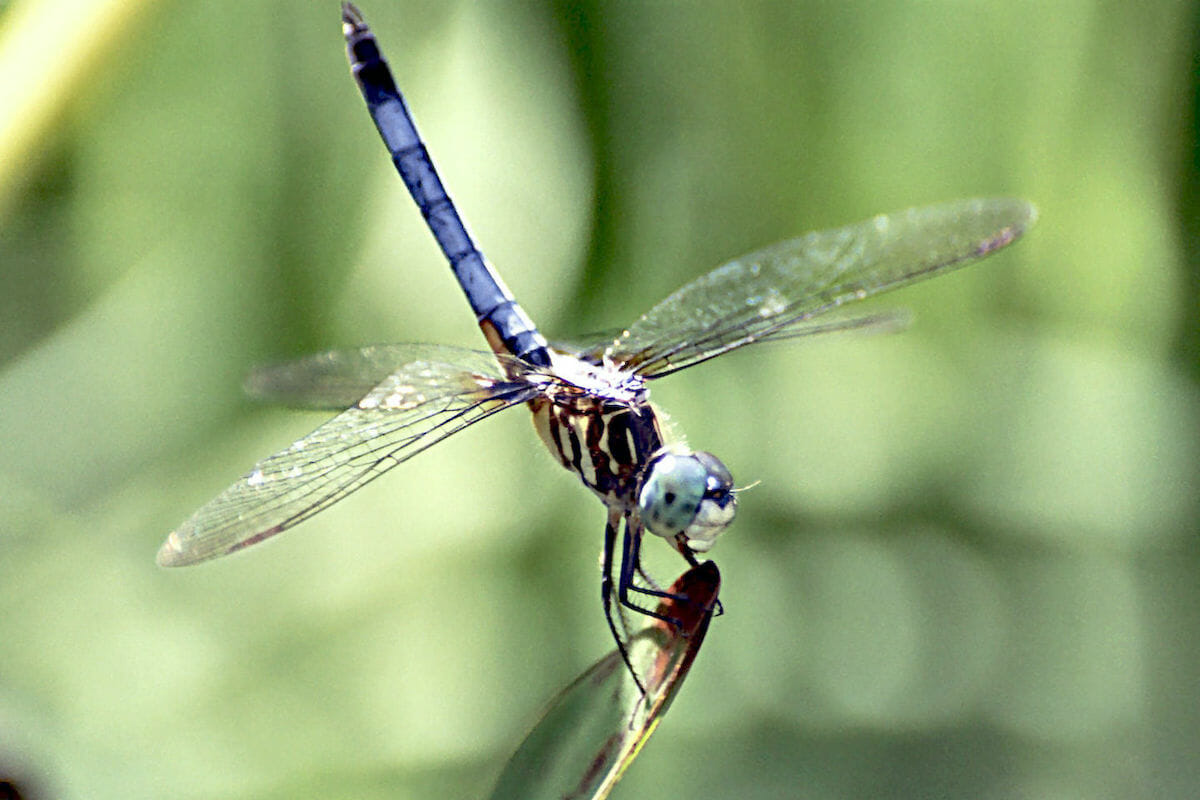Our recent rains and the changing season have allowed Dragonflies—a most beautiful insect—to prosper in the Lowcountry. Dragonflies are insects that people notice. As adults they are large, diurnal, often colorful, and are swift, acrobatic fliers. They are sufficiently noticeable that they have received numerous folk names. They have become embedded in folklore and mythology in many cultures and are the subjects of beautiful art.
Dragonflies are an important environmental indicator. They rely on healthy aquatic ecosystems and healthy food chains. Threats to their wellbeing include habitat loss and water pollution.
Dragonflies play ecological roles not only as predators but also as prey for birds, frogs and other creatures.
Dragonflies eat mosquitos. This is certainly true and is undoubtedly beneficial since mosquitos are at best annoying and at worst dangerous vectors of serious and widespread diseases. https://www.ncbi.nlm.nih.gov/
Dragonflies are important to their environments both as predators (particularly of mosquitos) and as prey to birds and fish. Because these insects require stable oxygen levels and clean water, scientists consider them reliable bioindicators of the health of an ecosystem. https://www.nationalgeographic.com
One of the most useful dragonfly facts is that they reside low in the food chain, so scientific study of their numbers and their health can reveal changes in water ecosystems more quickly than studying other animals or plants. Some national parks are beginning to use this species to survey and document the health of the park’s water ecosystems.
While adult dragonflies hunt for the adult insects, the dragonfly larvae also feed on harmful underwater larvae, like mosquitoes. They spend most of their lives underwater as nymphs, where their contributions to prevent mosquito outbreak is important to human beings.
Dragonfly eggs are laid and hatched in or near water, so their lives impact both water and land ecosystems. Once hatched, dragonfly nymphs are able to breathe underwater, and they use a motion similar to jet propulsion to move through their environment. This enables them to eat harmful aquatic organisms such as mosquito larvae. The nymph will continue contributing to this ecosystem for one to five years before becoming a mature adult.
A dragonfly may consume as much as a fifth of its body weight in prey per day. Dragonflies are also some of the insect world’s most efficient hunters, catching up to 95% of the prey they pursue.
Adult dragonflies hunt on the wing using their exceptionally acute eyesight and strong, agile flight. Dragonflies possess remarkable flying skills. They can fly forward at approximately 35 miles per hour. They can even hover in mid-flight for almost one minute and rotate 360 degrees in place. Moreover, they can fly backwards with similar alacrity.
Dragonfly vision is thought to be like slow motion for humans. Dragonflies see faster than we do; they see around 200 images per second. A dragonfly can see in 360 degrees, and nearly 80 percent of the insect’s brain is dedicated to its sight.
Unlike many other insects, they do not damage crops or spread diseases, says Christine Lewis, director of education at the Virginia Living Museum in southeastern Virginia. Despite their intimidating size, dragonflies are harmless to humans.
Other sources:
Exclusive content from CARE magazine












